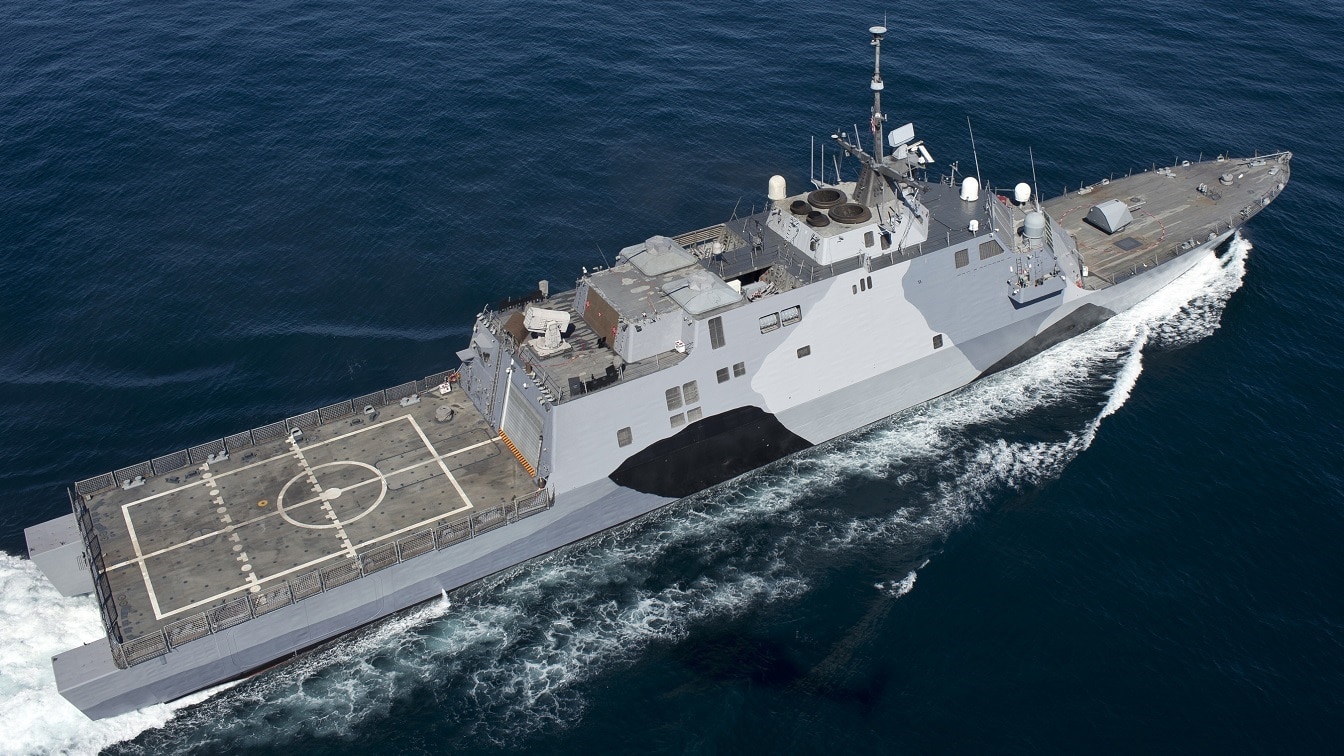In a ceremony on Saturday, the United States Navy commissioned the USS Marinette (LCS-25). It is the 13th Freedom-class Littoral Combat Ship (LCS) to enter service – yet it joins the fleet just a month after the decommissioning of the USS Sioux City (LCS-11) in Mayport, Florida.
The former LCS-11 was another Freedom-class LCS that had only been commissioned into service with the U.S. Navy in November 2018. USS Sioux City is just the latest LCS vessel to have its career cut short – at least two decades shorter than was initially expected.
It was two years ago this past August that the United States Navy decommissioned the USS Independence (LCS-2) with little fanfare in a pier-side ceremony in San Diego. The namesake of the U.S. Navy’s Independence-class of LCS left the fleet after just 11 years in service, far shorter than the expected 25-year lifespan the Navy had envisioned for the fast-moving warships that were designed to operate close to shore. USS Freedom (LCS-1) was also decommissioned in September 2021.
Littoral Combat Ships: Out With the Old
Last year, a total of nine Freedom-class LCSs were marked for disposal as part of the Department of Defense’s (DoD’s) Fiscal Year 2023 budget proposal.
Yet, even as the oldest of these vessels are being retired well before the end of their expected service life, the U.S. Navy is still seeing new vessels added to the fleet. Moreover, it was earlier this month that the Pentagon announced that defense primes Lockheed Martin and General Dynamics had each been awarded multi-million-dollar contracts to sustain the twin-variant Littoral Combat Ship (LCS) program. The combined value of the contracts was reported to be in excess of $129 million.
Both contracts are expected to be completed by next August, with the United States Naval Sea Systems command acting as the contracting authority. The U.S. Navy is now sustaining warships it actually doesn’t even want in service. It is also notable that the Navy is now commissioning vessels like the USS Marinette as another LCS that is only five years old is being retired.
Hole In the Water
The LCS program was once billed as the future of the fleet, as the small and fast warships were seen as ideal for combating missile-firing boats, and even small submarines, while it was envisioned that the stealthy surface combatants could be capable of defeating anti-access and asymmetric threats in littoral or near-shore waters.
Also unique was that the U.S. Navy opted for two unique classes of vessels – each slightly smaller than the Oliver Hazard Perry-class frigate. The first was the Freedom-class, which was designed by Lockheed Martin and built by Marinette Marine in Marinette, Wisconsin. It was the smaller of the two; a steel-hulled 387-foot warship that utilized a semi-planing monohull. The second variant was the Independence-class, featuring a trimaran with a slender stabilized mono-hull that could allow flight operations for its helicopters in up to sea state five (rough) conditions. The 421-foot all-aluminum warship was designed and built by Austal USA in Mobile, AL.
However, the LCS program’s capabilities were vastly hindered after Congress cut the funding for the mission modules, while class-wide propulsion and hull crack issues have plagued both the Freedom and Independence LCS classes.
Critics of the LCS program have argued that the ships aren’t suited to confronting near-peer adversaries, are unreliable, and still lack the modules that could make them more capable. Yet, lawmakers have refused to allow the Navy to rid itself of more of the ships – and there are currently four Freedom-class variants and three Independence-class ships now under construction.
Thus even as vessels are retired before their time, others will enter service – it would seem like a huge hole in the water for taxpayers.
Author Experience and Expertise
A Senior Editor for 19FortyFive, Peter Suciu is a Michigan-based writer. He has contributed to more than four dozen magazines, newspapers, and websites with over 3,200 published pieces over a twenty-year career in journalism. He regularly writes about military hardware, firearms history, cybersecurity, politics, and international affairs. Peter is also a Contributing Writer for Forbes and Clearance Jobs. You can follow him on Twitter: @PeterSuciu.

